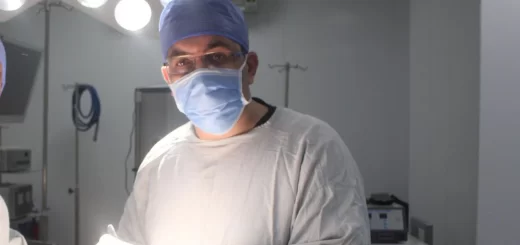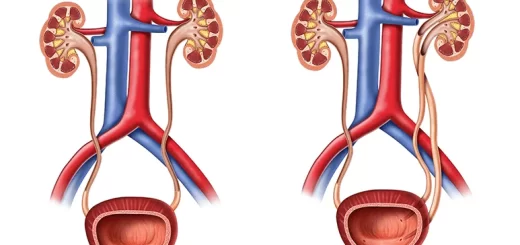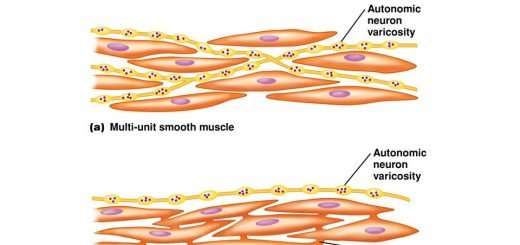Colorectal cancer causes, symptoms, treatment, and How to avoid colorectal cancer?
Treatment options for colorectal cancer depend on the stage of the cancer and the patient’s overall health, It is a type of cancer that begins in the colon or rectum. These are parts of the large intestine. Common treatments such as Surgery, Chemotherapy, Radiation therapy, and Targeted therapy.
Colorectal cancer
Colorectal cancer is the fourth most frequently diagnosed cancer and the second leading cause of cancer death in the United States, The incidence decreased at a rate of approximately 3% per year between 2003-2012 In addition, mortality from CRC decreased by almost 35% from 1990-2007. These improvements in the incidence of and mortality from CRC are thought to be a result of shifting patterns of CRC risk factors, cancer prevention, and earlier diagnosis through screening and better treatment modalities.
Types of Colorectal Cancer
- Primary: 95% adenocarcinoma, 5% lymphoma, carcinoid, leiomyosarcoma.
- Metastatic lesions to colorectum: lymphoma, malignant melanoma, leiomyosarcoma, adenocarcinoma of breast ovaries, or prostate.
Risk factors
- Host and environmental factors.
- Age (75% > 65 years).
- Sex: more in males than females.
- Ethnicity/race: Black people are at greater risk of colorectal cancer occurrence and mortality.
- Personal and family history of colorectal neoplasia.
- Dietary components (excess red meat, high fat, low vegetables and fruits.
- Obesity.
- Inflammatory bowel disease: in U.C.: extent and duration, in Crohn’s: duration of disease.
- Lifestyle: alcohol, tobacco risk, physical activity risk
- Others: Type 2 DM, acromegaly, pelvic irradiation, uterosigmoidostomy.
Patterns of CRC
- Sporadic 65%.
- Familial 30%: Patients inherit susceptibility to environmental carcinogens or SNP.
- Genetic 5%: Familial adenomatous polyposis, Lynch syndrome, Hamartomatous polyposis syndromes (e.g., PJ syndrome).
Genetic syndromes
Specific syndromes associated with susceptibility to colorectal cancer. It is important to consider these disorders in patients with a family history of colorectal cancer that has affected more than one family member, those with a personal or family history of colorectal cancer developing at an early age (50 years or younger) those with a family history of multiple polyps (more than 20), and those with a personal or family history of multiple extracolonic malignancies In such conditions genetic testing is advised.
Lynch syndrome (HNPCC)
- Autosomal dominant disorder (mean age, 45 years).
- Associated with germline mutations in one of several mismatch repair genes (i.e., MSH2, MLH1, MSH6, PMS2, EPCAM).
- The lifetime risk of developing colorectal cancer is approximately 66% for men and 43% for women.
- A subset of patients is also at higher risk for extracolonic malignancies (e.g., e endometrial, gastric, pancreatic, biliary, urothelial).
Familial adenomatous polyposis (FAP)
- Autosomal dominant.
- Characterized by the teenage onset of hundreds to thousands of adenomatous polyps throughout the colon by the age of 15 and cancer colon by the age of 40.
- The attenuated form is autosomal dominant, and is usually identified in patients older than 40 years, and features 10 to 100 adenomas and cancer colon by the age of 56.
- If left untreated, the lifetime risk of developing colorectal cancer is 95%.
- Variety of extracolonic manifestations, including duodenal adenomas, desmoid tumors, and osteomas.
- Genetic testing confirms mutation of the APC gene (90%) or MUTYH gene (8%).
- Prophylactic colectomy is recommended to prevent otherwise inevitable colorectal cancer (adenocarcinoma).
Peutz-Jeghers syndrome
- The autosomal dominant disorder is caused by germline mutations in STK11 (serine/threonine kinase 11).
- Characterized by (intestinal hamartomatous polyps and mucinous pigmentation.
Juvenile polyposis syndrome
- The autosomal dominant disorder is caused by germline mutations in SMAD4 (SMAD family member 4) or BMPR1A (bone morphogenetic protein receptor type 1A).
- Characterized by juvenile polyps, and often presented by age 20 years.
Cowden syndrome (multiple hamartoma syndrome)
- Autosomal dominant, germline mutations in PTEN (phosphatase and tensin homolog).
- Characterized by gastrointestinal polyposis, hamartomas, and increased risk of malignancies in the endometrium, breast, and thyroid.
- Hamartomas are commonly found on skin and mucous membranes.
Serrated polyposis syndrome
- Disorder with no established inheritance.
- Characterized by multiple and/or large serrated polyps in the colon.
Clinical features of CRC
Symptoms related to tumor size and location:
- Proximal (cecum to splenic flexure): ill-defined abdominal pain, weight loss, and occult bleeding
- Distal tumors (descending colon and rectum): altered bowel habits, decrease stool caliber, hematochezia, late intestinal obstruction.
investigations
- Colonoscopy up to the cecum should be done owing to the possibility of synchronous lesions.
- Lab investigations: CBC: normal or iron deficiency anemia. LFT: if high suspect of liver metastasis. Tumor marker (CEA): increased in most but not all cases.
- Staging is through a CT scan.
- EUS is used in the staging of cancer rectum and anal canal only.
Treatment
- Management may include surgical resection, chemotherapy, radiotherapy, or a combination.
- The regimen is determined by location (colon or rectum), clinical stage, histologic features on biopay, and the presence of comorbidities
- Surgery is the keystone of treatment for candidates with acceptable operative risk and resectable disease.
- For resectable nonmetastatic colon cancer, the preferred procedure is colectomy with en-bloc removal of regional lymph nodes.
- Some patients with lesions deemed unresectable at presentation may benefit from neoadjuvant chemotherapy or radiation to shrink the mass to an operable size.
- Adjuvant chemotherapy is given after surgery to prevent local recurrence or metastasis in patients with more advanced stages.
- Palliative chemotherapy is given to patients with unresectable metastatic disease to prolong survival and improve quality of life.
Screening for colorectal cancer
The aim of screening is the detection and removal of precancerous lesions (adenoma) to prevent CRC:
- Colorectal cancer (CRC) screening is the process of detecting early-stage CRCs and precancerous lesions in asymptomatic people with no prior history of cancer or precancerous lesions.
- Surveillance refers to the interval use of colonoscopy in patients with previously detected CRC or precancerous lesions and interval colonoscopy in patients to detect dysplasia in persons with inflammatory bowel disease affecting the colon.
Initial screening and intervals between screening
For patients at average risk/testing with a tier 1 test should begin at age 45 years for African Americans and at age 50 for patients of all other races and repeated every ten years.
For patients with a family history of colorectal cancer or advanced adenoma that was diagnosed before age 60 years in one first-degree relative or at any age in two first-degree relatives, testing should begin with colonoscopy at an age 10 years younger than the youngest age at diagnosis of a first-degree relative, or age 40 to be repeated every 5 years.
In patients with one first-degree relative with colorectal cancer, advanced adenoma, or an advanced serrated lesion diagnosed at age 60 or older). screening should begin with a tier 1 test at age 40 and continue at the same intervals as in average-risk patients.
Colonoscopy screening should be discontinued in patients aged 75 or older with prior negative screening tests or whose life expectancy is less than 10 years or in those 85 years or older without prior screening.
You can subscribe to Science Online on YouTube from this link: Science Online
You can download Science online application on Google Play from this link: Science online Apps on Google Play
Gastroesophageal reflux disease (GERD) cause, treatment and How to treat eosinophilic esophagitis?
Pharynx function, anatomy, location, muscles, structure, and Esophagus parts
Tongue function, anatomy and structure, Types of lingual papillae and Types of cells in taste bud
Mouth Cavity divisions, anatomy, function, muscles, Contents of Soft palate and Hard palate
Temporal and infratemporal fossae contents, Muscles of mastication and Otic ganglion
Stomach parts, function, curvatures, orifices, peritoneal connections and Venous drainage of Stomach




